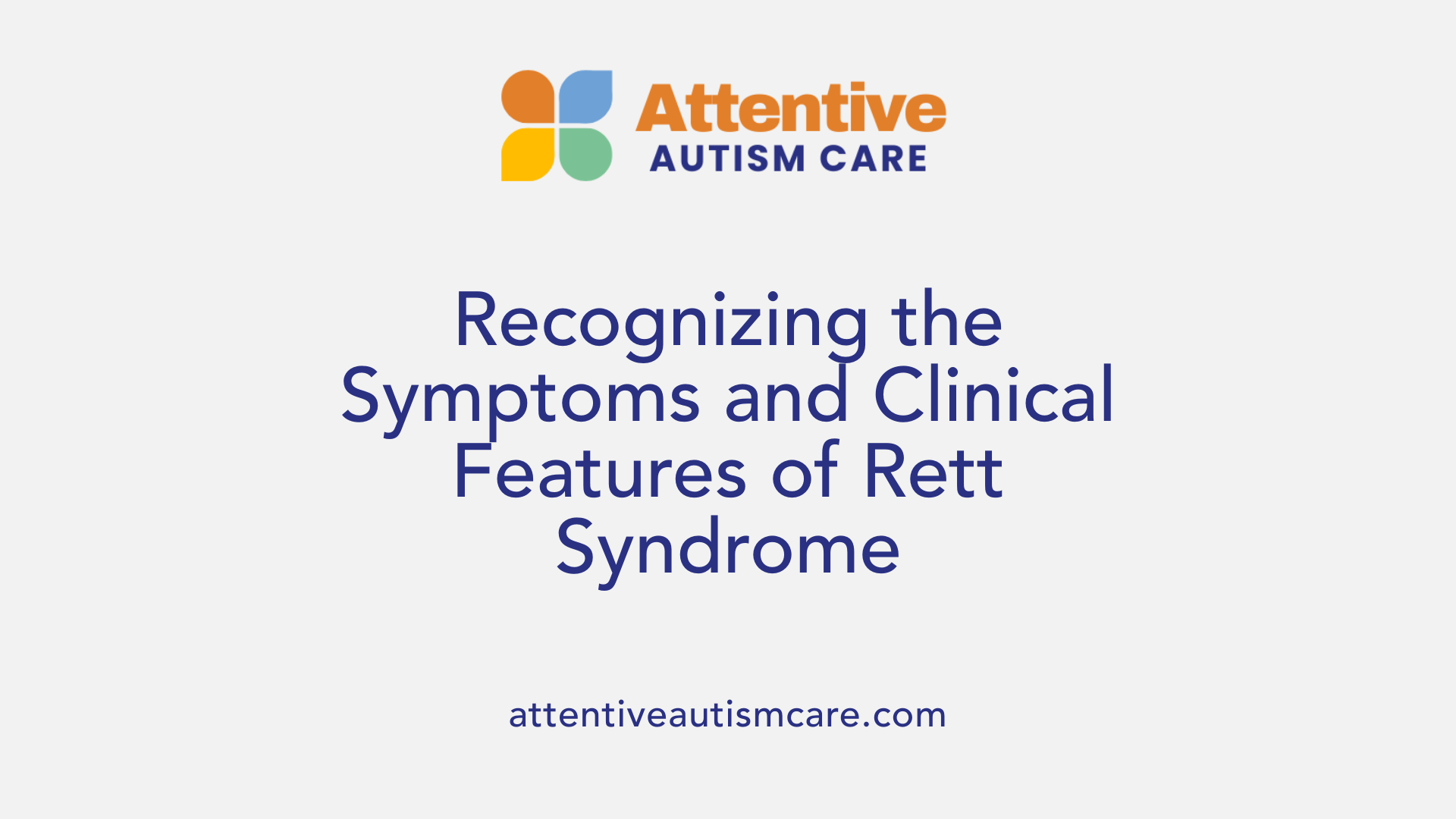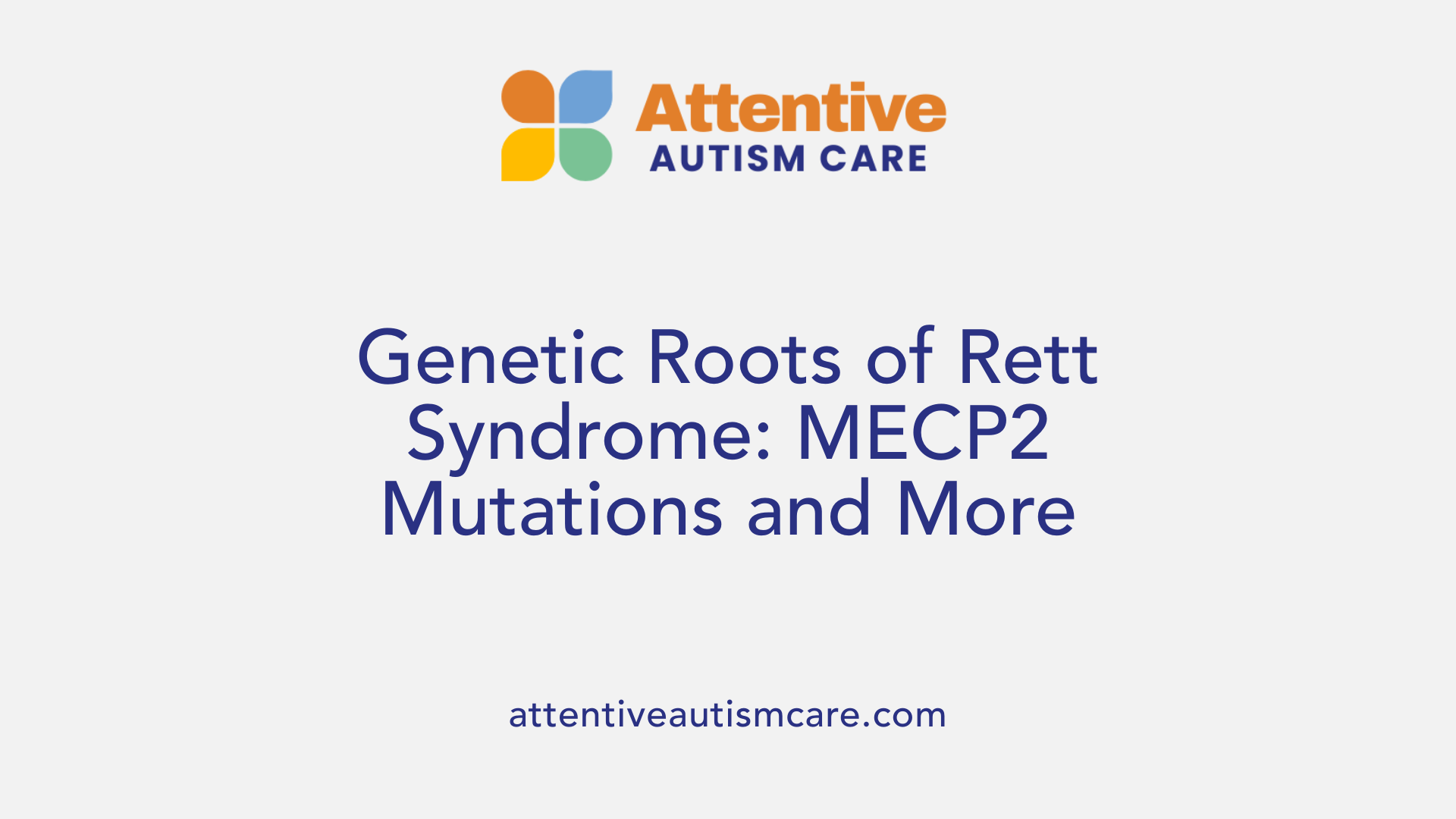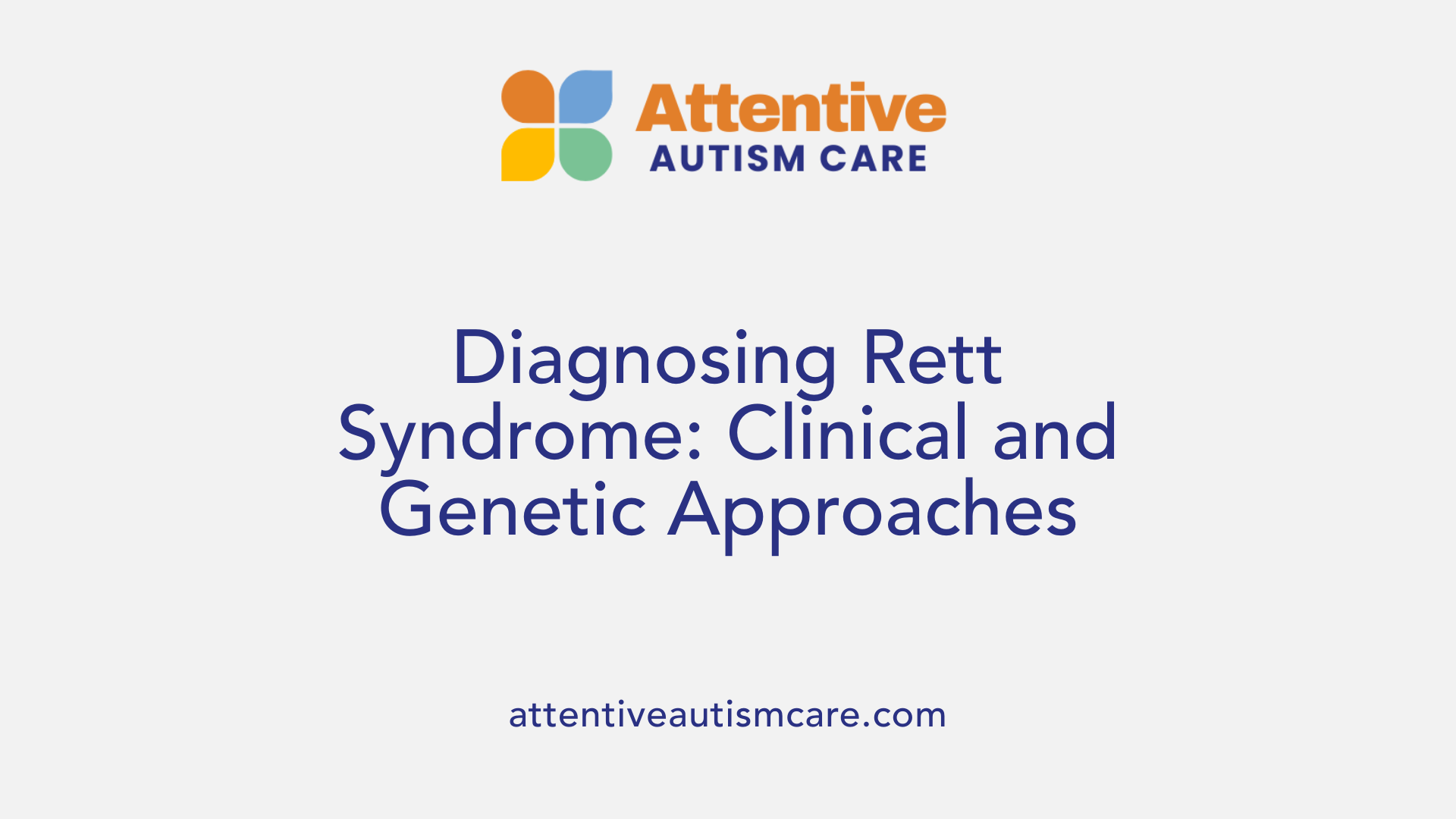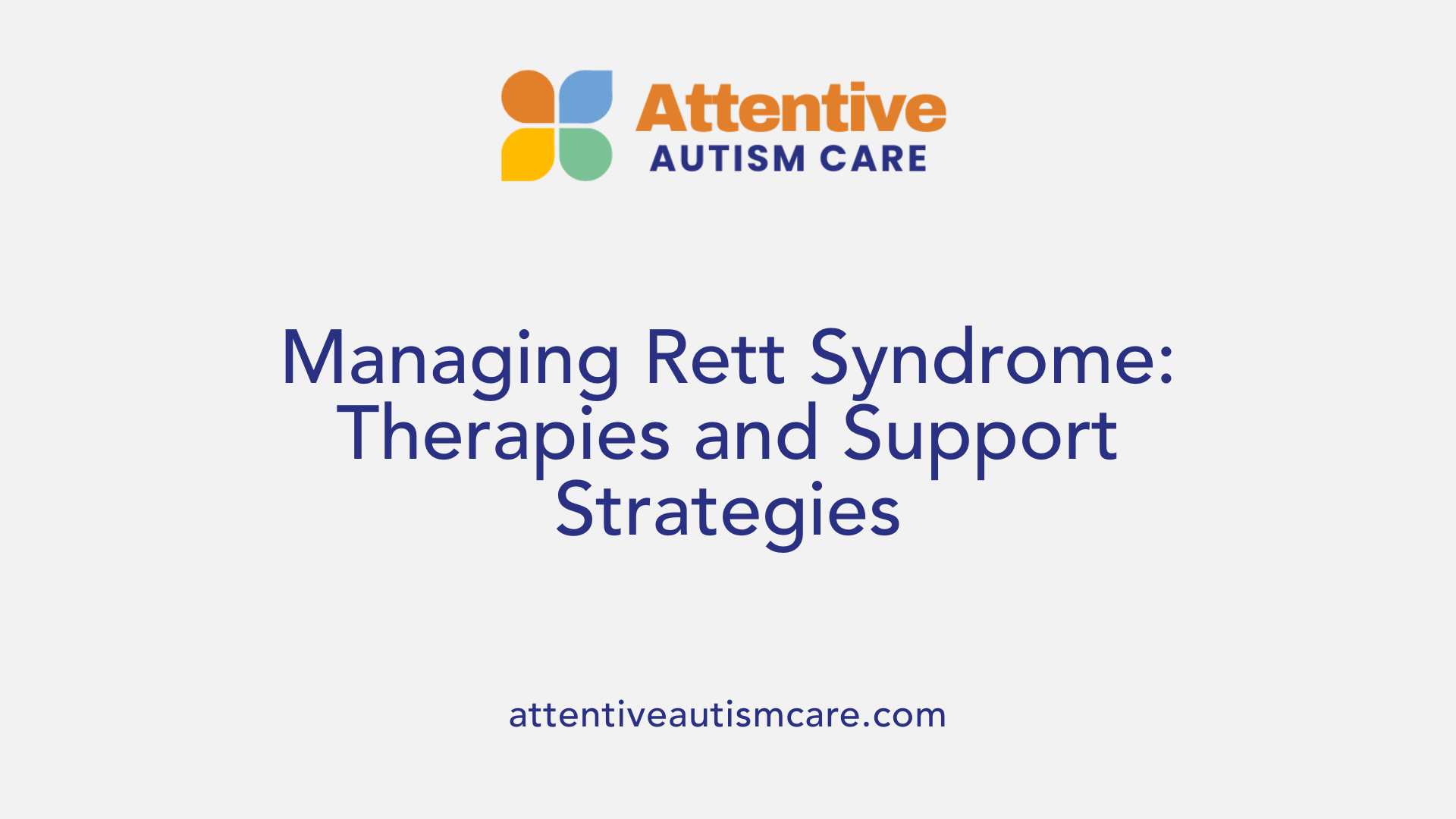Rett Syndrome: Symptoms, Causes, and Treatment
Unveiling Rett Syndrome: Understanding Its Symptoms, Causes, and Current Treatment Strategies

Introduction to Rett Syndrome
Rett syndrome is a rare but severe neurodevelopmental disorder primarily affecting girls, characterized by normal early development followed by a regression of skills. This condition impacts brain development, leading to profound motor, cognitive, and behavioral impairments. Despite no known cure, advances in research, early diagnosis, and comprehensive management significantly improve quality of life for affected individuals.
What is Rett Syndrome and Its Key Characteristics

What is Rett Syndrome and what are its key characteristics?
Rett Syndrome is a rare genetic neurological disorder that mostly affects girls. It is caused by mutations in the MECP2 gene located on the X chromosome. Typically, children with Rett syndrome develop normally for the first 6 to 18 months, but then begin to lose skills such as head growth, hand movements, speech, and coordination.
The disorder progresses through several stages: initial signs, rapid skill deterioration, a plateau phase, and a late motor decline. Common signs include slowed growth, microcephaly (small head size), loss of purposeful hand use, repetitive hand movements like wringing, seizures, breathing irregularities, and orthopedic issues such as scoliosis. These symptoms reflect both neurological impairments and motor challenges.
While there is no cure for Rett syndrome, treatments focus on alleviating symptoms and enhancing quality of life. Supportive therapies, medications, and recently approved drugs help manage seizures, breathing difficulties, and motor problems. Most individuals with Rett syndrome can live into their 40s and beyond with appropriate care. Ongoing medical oversight and therapy are essential for managing the complex features of this condition, which varies among individuals.
Symptoms and Clinical Features of Rett Syndrome

What are the common symptoms and clinical features of Rett Syndrome?
Rett syndrome is a neurological disorder that usually manifests after a period of normal development in infants and toddlers. Most children develop normally for the first 6 to 18 months, but then begin to lose acquired skills.
One of the hallmark signs is developmental regression, particularly in purposeful hand movements and speech. Children often start to hand-wring, clapping, or rubbing their hands repetitively. Alongside these behavioral changes, children may experience slowed growth and a small head size, known as microcephaly.
Physical features include muscle hypotonia, which is low muscle tone, making movements appear jerky or uncoordinated. Children may also develop scoliosis, a curvature of the spine, as the disorder progresses.
Seizures are common, along with breathing irregularities such as breath-holding episodes, hyperventilation, or irregular heartbeat. These symptoms often become more pronounced during the rapid deterioration stage.
Additional symptoms include sleep disturbances, gastrointestinal problems, and abnormal eye movements such as nystagmus. Many children also exhibit reduced eye contact and social engagement.
Throughout its course, Rett syndrome progresses through four stages: early onset, rapid deterioration, plateau, and late motor deterioration. Symptoms peak during the rapid deterioration phase, where loss of skills and movement difficulties intensify.
Management of Rett syndrome involves symptomatic treatment aimed at controlling seizures, supporting motor skills, and addressing breathing and gastrointestinal issues. Early diagnosis and intervention can improve quality of life for those affected.
Underlying Causes and Genetic Factors

What causes Rett Syndrome?
Rett syndrome is mainly caused by mutations in the MECP2 gene, which is located on the X chromosome. This gene encodes a crucial protein called MeCP2 that regulates gene activity and supports the development and maintenance of nerve cells in the brain.
Most cases of Rett syndrome are the result of spontaneous, or de novo, mutations. This means the genetic change typically occurs randomly in the egg or sperm before conception and is not inherited from the parents. Consequently, almost all cases are new mutations, and familial inheritance is uncommon.
Because the MECP2 gene resides on the X chromosome, the disorder predominantly affects girls. Females have two X chromosomes, so a mutation in the MECP2 gene on one X chromosome can lead to the syndrome, with the severity depending on which X chromosome remains active in each cell. Males, having only one X chromosome, usually experience more severe symptoms and often do not survive infancy, although some may display milder forms.
Apart from the classic MECP2 mutations, atypical or variants of Rett syndrome may involve mutations in other genes. Notably, alterations in the FOXG1 gene and the CDKL5 gene are linked to specific forms of Rett-related neurodevelopmental disorders. These variants tend to present with similar symptoms but may follow different progression patterns.
In summary, Rett syndrome is caused by genetic mutations that disrupt normal brain development. The spontaneous nature of these mutations and their sex-linked inheritance pattern explain why the condition primarily affects girls with a sporadic occurrence and why the severity varies depending on the specific genetic changes.
Diagnosis Methods and Criteria

How is Rett Syndrome diagnosed?
Rett syndrome diagnosis relies heavily on a thorough clinical evaluation combined with genetic testing. Medical professionals begin by reviewing the child's developmental history, focusing on the typical pattern of normal early development followed by regression, usually between 6 and 18 months of age. Key physical and behavioral signs include loss of purposeful hand movements, problems with speech, gait abnormalities, and characteristic hand stereotypies like wringing or clapping.
During the assessment, doctors observe for signs such as slowed head growth (microcephaly), irregular breathing patterns, seizures, and scoliosis. They also conduct neurological tests, brain imaging like MRI, and sometimes EEG to exclude other conditions that mimic Rett syndrome, such as autism spectrum disorder or cerebral palsy.
Genetic testing plays a crucial role in confirming the diagnosis. It involves analyzing the MECP2 gene for mutations, which are present in over 95% of cases. The presence of a mutation provides strong support for a Rett syndrome diagnosis. Additionally, testing can identify mutations in other related genes like CDKL5 or FOXG1 in atypical cases.
Diagnosis is often made by a team including pediatric neurologists, geneticists, and other specialists who evaluate both clinical features and genetic data. Early diagnosis facilitates better management of symptoms and access to supportive therapies.
For more detailed criteria and diagnostic approaches, search for the terms "Diagnostic criteria and methods for Rett syndrome."
| Diagnostic Steps | Description | Purpose |
|---|---|---|
| Clinical Evaluation | Developmental history, physical, and behavioral assessment | Identify characteristic symptoms and progression |
| Observation of Symptoms | Hand stereotypies, gait, head growth | Recognize hallmark features |
| Brain Imaging | MRI or ultrasound to exclude other conditions | Rule out alternative diagnoses |
| EEG | Detect seizures and abnormal brain activity | Support neurological assessment |
| Genetic Testing | DNA analysis for MECP2 mutations | Confirm the diagnosis |
This combined approach helps ensure an accurate diagnosis, guiding appropriate intervention and support for affected individuals.
Treatment Options and Management Strategies

What are the treatment options and management strategies for Rett Syndrome?
Currently, there is no cure for Rett syndrome, so treatment focuses on relieving symptoms and improving quality of life through a comprehensive, multidisciplinary approach. This includes medications, therapies, nutritional support, and adaptive tools.
Medications such as anticonvulsants are commonly used to control seizures, which are a frequent issue in individuals with Rett syndrome. Breathing irregularities may also require medication or respiratory support. Recently, the FDA approved a drug called trofinetide (Daybue), which is designed to modify disease activity and reduce some symptoms, offering new hope for affected children.
Through physical, occupational, and speech therapies, children can work on improving mobility, hand movements, and communication skills. These therapies help maximize developmental potential and manage motor difficulties.
Nutritional and feeding support is critical since many children experience difficulties swallowing or feeding, leading to risks of malnutrition. Support may involve high-calorie diets, supplementation, or feeding assistance, including the use of gastrostomy tubes if necessary.
Supportive devices and educational adaptations are also beneficial. Orthopedic devices, such as braces, can aid mobility and prevent scoliosis. Early intervention programs, tailored educational plans, and behavioral therapies promote social engagement and develop skills that enhance daily living.
Emerging research is continuously exploring new treatments, including gene therapy and other innovative approaches. Clinical trials are underway to discover therapies that, beyond symptom management, might one day address the genetic roots of Rett syndrome.
Overall, management strategies aim to optimize health, reduce complications, and support independence as much as possible, allowing individuals with Rett syndrome to lead fulfilling lives.
Prognosis and Common Complications
What is the prognosis for individuals with Rett Syndrome, and what are potential complications?
The outlook for individuals with Rett syndrome can vary greatly, largely depending on the severity of their symptoms and the effectiveness of treatment strategies. Many girls with Rett syndrome survive into their 40s and beyond, with some reaching middle age, though they often require lifelong medical and supportive care.
While Rett syndrome is not classified as a degenerative condition—meaning symptoms do not necessarily worsen with age—there is a progressive loss of motor skills and communication abilities. This ongoing deterioration can significantly affect daily functioning and overall quality of life.
Several health complications are common among those affected. These include seizures, which can be difficult to control, and scoliosis, a curvature of the spine that may require surgical intervention. Breathing irregularities such as hyperventilation or breath-holding spells are also prevalent, sometimes leading to medical emergencies. Gastrointestinal issues, including difficulty swallowing and constipation, are frequent, and heart problems like prolonged QT interval can increase the risk of arrhythmias.
Pneumonia remains one of the leading causes of death in Rett syndrome, often linked to aspiration or feeding challenges that impair normal swallowing and breathing coordination.
However, with comprehensive care—including medications, therapies, and sometimes surgical procedures—many individuals can manage these complications effectively. Supportive therapies such as physical, occupational, and speech therapy can help preserve mobility and communication skills where possible. Medications can control seizures and manage breathing issues.
Overall, early diagnosis and tailored management plans are crucial to improving life expectancy and quality. Although challenges persist, many individuals with Rett syndrome live meaningful lives with appropriate intervention and support systems.
Innovations and Research Developments
What are the current research developments and advancements related to Rett Syndrome?
Recent progress in Rett Syndrome research has been remarkable. In March 2023, the FDA approved DAYBUE® (trofinetide), a medication shown to improve engagement, hand use, and eye gaze, as well as speech in patients. Long-term data published in 2024 confirms that many individuals experience sustained symptom improvements.
Additionally, the ongoing LOTUS clinical trial is evaluating the real-world effectiveness of trofinetide, with many participants demonstrating better communication and social interaction.
Scientists are exploring new treatments through a variety of clinical trials. Notably, gene therapy trials such as NGN-401 and TSHA-102 are advancing rapidly and exhibit promising results, holding potential for altering disease course.
A major focus of current research lies in understanding the genetic and molecular basis of Rett Syndrome, primarily looking at the MECP2 gene mutations. Cutting-edge approaches like gene editing using CRISPR and RNA-based therapies are being investigated to correct or compensate for faulty genes.
These advancements are part of a broader shift towards targeted, disease-modifying treatments. The collaborative effort among biotech companies, academic institutions, and key funding agencies like the NIH and IRSF continues to accelerate progress.
Overall, the landscape of Rett syndrome treatment is shifting from purely symptomatic management to experimental therapies aimed at fundamentally altering disease mechanisms. The future looks promising with ongoing innovation and research efforts.
Resources and Support for Affected Families and Individuals
Support for individuals with Rett syndrome and their families encompasses a broad array of organizations, services, and community networks that address medical, educational, and psychosocial needs.
One of the primary resources is the International Rett Syndrome Foundation (IRSF). This organization offers extensive support, including guidelines for healthcare management, educational programs, and a comprehensive Resource Library. Families can access care protocols, informational handbooks, and transition planning tools, which are crucial for managing the evolving needs of those affected.
Support groups and community networks also play a vital role. Organizations like Girl Power 2 Cure focus on advocacy, raising awareness, and funding research. Rett Syndrome Angels and other local or online communities provide emotional support, peer connection, and shared experiences, helping families navigate daily challenges.
Access to specialized clinics and participation in clinical trials are essential for advancing care. The IRSF’s Center of Excellence Network connects families with clinics experienced in Rett syndrome, offering multidisciplinary treatment approaches. This network also facilitates enrollment in cutting-edge research and experimental therapies, including gene therapy and new pharmacological options.
Genetic testing and counseling services are important for understanding individual cases, especially since most mutations occur spontaneously. Genetic services help families comprehend inheritance patterns, recurrence risks, and explore options for future pregnancies.
Community support extends to psychosocial services, including counseling for emotional health, behavioral management, and support for educational needs. Many organizations advocate for better school accommodations and inclusive educational resources.
Overall, a combination of specialized medical services, advocacy, community engagement, and ongoing research options provides a comprehensive support system for those affected by Rett syndrome, improving quality of life and fostering hope for future treatments.
Closing Thoughts and Future Outlook in Rett Syndrome Care
While Rett syndrome remains a complex and challenging condition, ongoing research, early diagnosis, and a multidisciplinary approach to management have significantly enhanced the quality of life for many affected individuals. Advances such as FDA-approved medications like Trofinetide and promising gene therapy trials offer hope for more targeted and potentially curative treatments in the future. Support networks and educational resources play a critical role in empowering families and caregivers. Continued collaboration among scientists, healthcare providers, and advocacy groups is essential to unlock the full potential of emerging therapies and improve outcomes for those living with Rett syndrome.
References
- Rett syndrome - Symptoms & causes - Mayo Clinic
- Understanding Rett Syndrome
- Rett Syndrome: What It Is, Symptoms & Treatment - Cleveland Clinic
- Rett syndrome - NHS
- Rett Syndrome | National Institute of Neurological Disorders and ...
- Rett Syndrome: Symptoms, Causes, and Treatment Options - WebMD
- Rett Syndrome - Symptoms, Causes, Treatment | NORD
- About Rett Syndrome, Symptoms, Causes, Diagnosis and Treatments
- Rett Syndrome | Boston Children's Hospital




































































































